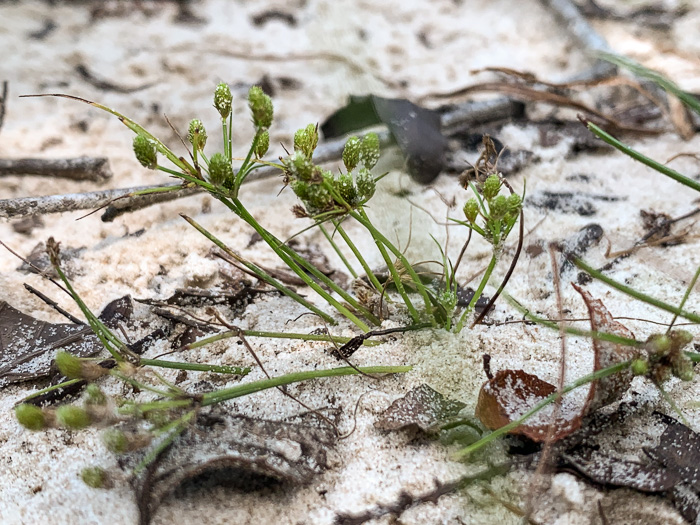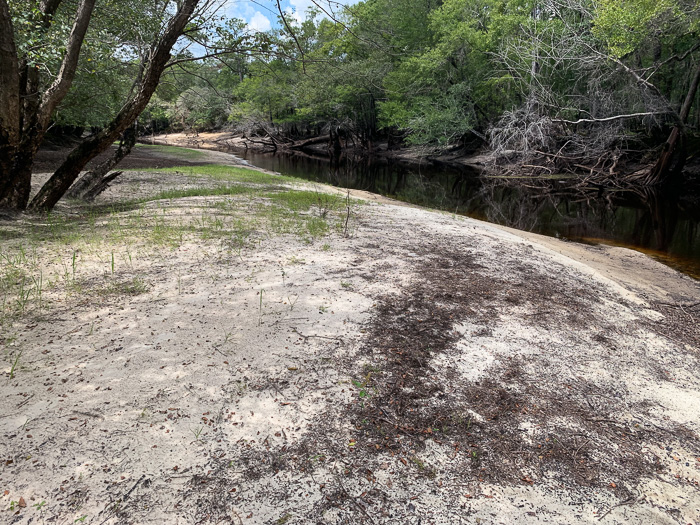Spermatophytes (seed plants): Angiosperms (flowering plants): Monocots: Commelinids: Poales
WEAKLEY'S FLORA OF THE SOUTHEASTERN US (2/8/20):
Fimbristylis perpusilla
FAMILY
Cyperaceae
Go to FSUS key
Dig deeper at SERNEC, a consortium of southeastern herbaria.
The spikelets in the genus Fimbristylis resemble tiny pinecones. Read more at Vascular Plants of North Carolina.
SYNONYMOUS WITH
PLANTS NATIONAL DATABASE:
Fimbristylis perpusilla
FAMILY
Cyperaceae
SYNONYMOUS WITH Manual of the Southeastern Flora (Small, 1933, 1938)
Fimbristylis perpusilla
COMMON NAME:
Harper's Fimbry
To see larger pictures, click or hover over the thumbnails.
Keith Bradley kab_5502
August Marlboro County SC
Plants diminuitive; leaf blades < 1mm wide; inflorescence bracts 1-2 cm long, per Weakley's Flora (2020).
Keith Bradley kab_5518
August Marlboro County SC
Typically occurs on banks exposed in summer by falling water levels, per Weakley's Flora (2020).
WEAKLEY'S FLORA OF THE SOUTHEASTERN US (2/8/20):
Fimbristylis perpusilla
FAMILY
Cyperaceae
SYNONYMOUS WITH
PLANTS NATIONAL DATABASE:
Fimbristylis perpusilla
FAMILY
Cyperaceae
SYNONYMOUS WITH
Manual of the Southeastern Flora (Small, 1933, 1938)
Fimbristylis perpusilla
If a search such as "Carex leptalea var. leptalea" doesn't deliver the results you want, try "Carex leptalea".
Or, to minimize chances of a misspelling, try just "Carex le".
Less is more: If "pencil flower" doesn't deliver the results you want, try "pencil".



